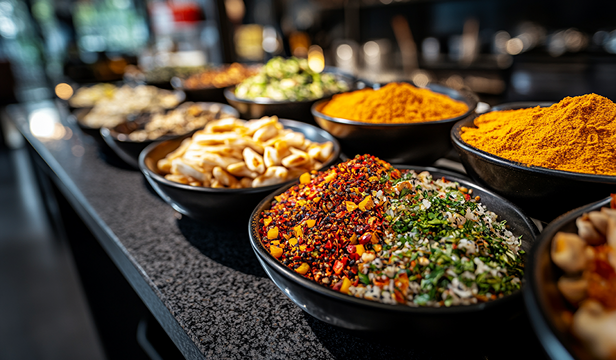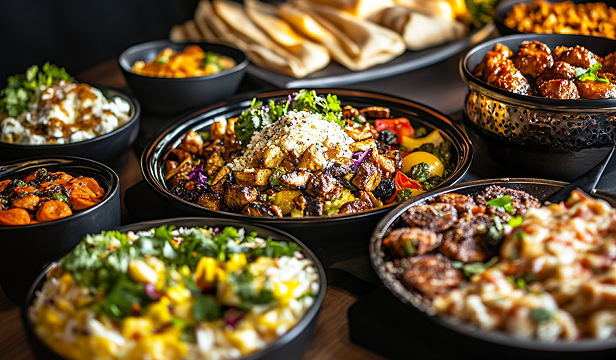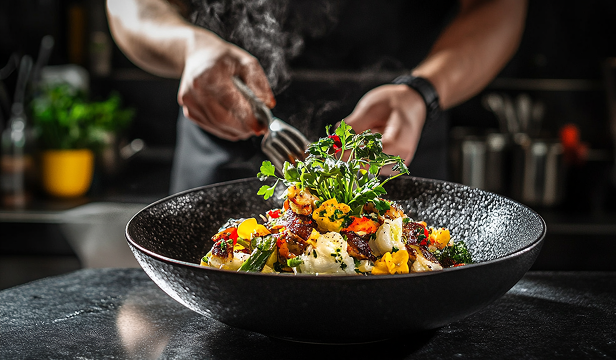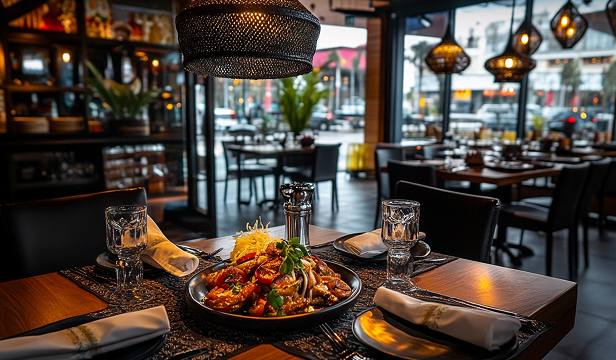Introduction Middle Eastern art is renowned for its intricate patterns, rich colours, and deep cultural…

Exploring the Link Between Middle Eastern Spices and Art Pigments
Introduction
For centuries, the Middle East has been renowned for its vibrant spices and its rich artistic traditions. What many may not realise is the deep historical connection between the region’s culinary ingredients and its artistic practices. Many natural spices that have been essential in Middle Eastern cuisine were also historically used as pigments in traditional art forms, textiles, and manuscript illumination. This fascinating intersection of gastronomy and artistry highlights how natural resources shape both cultural identity and creative expression.
Historical Use of Spices as Pigments
Before the advent of synthetic dyes, artists and craftsmen relied on natural sources for their colours. Middle Eastern traders, known for their extensive spice routes, not only transported flavourful ingredients but also supplied natural dyes and pigments to artisans across the world. Key examples include:
- Turmeric (Curcuma longa) – A staple in Middle Eastern and South Asian cuisine, turmeric was historically used as a yellow pigment in manuscript painting and textile dyeing.
- Saffron (Crocus sativus) – One of the world’s most valuable spices, saffron was prized for its ability to produce a brilliant golden-yellow dye used in Persian miniature paintings and fabric colouring.
- Paprika and Red Chili – Though not native to the Middle East, red spices introduced through trade were sometimes used to create earthy red tones in decorative art.
- Indigo (Indigofera tinctoria) – While primarily a plant dye, indigo’s trade was linked to spice merchants, and it was used to create the deep blues in ceramics, textiles, and manuscript illumination.
- Cinnamon and Clove – Though primarily known for their culinary applications, these spices were used to create brown hues in early paintings and textile art.
Artistic and Culinary Symbolism
Beyond their functional use, spices and pigments carried symbolic meanings in both food and art. The rich golden hue of saffron, for example, was associated with wealth, divinity, and purity, which is why it was often used in both luxurious dishes and sacred artwork. Similarly, deep reds derived from paprika and madder root represented vitality and protection, frequently appearing in both carpets and culinary traditions.
Spices in Traditional Middle Eastern Art Forms
Middle Eastern art is known for its intricate designs and vivid colour palettes. Many of these pigments, derived from the same spices used in daily cooking, were central to different art forms, including:
- Persian Miniature Painting – A refined art form that often utilised saffron and turmeric-based pigments to achieve rich golds and yellows.
- Ceramic and Tile Art – The famous blue-and-gold tiles of the Ottoman and Persian empires were made using natural pigments, some of which were sourced from trade routes that also brought spices.
- Textile Dyeing – Traditional Middle Eastern fabrics, from handwoven carpets to silk garments, were often dyed using spice-based colourants.
- Illuminated Manuscripts – The art of decorating books, particularly in the Islamic Golden Age, often featured natural pigments derived from spices.
Modern Revivals and Contemporary Applications
Today, the relationship between spices and pigments is being revived through sustainable and eco-friendly art practices. Many contemporary artists and textile designers are returning to natural dyes as an alternative to synthetic pigments, embracing traditional spice-based colouration methods.
- Natural Pigment Workshops – Artisans in countries like Turkey, Iran, and Morocco are reintroducing historical dyeing and painting techniques using saffron, turmeric, and indigo.
- Fusion of Culinary and Artistic Experiences – Some chefs and artists collaborate on immersive experiences that combine food presentation with artistic visuals inspired by spice colours.
- Eco-Conscious Fashion and Decor – Designers are incorporating spice-dyed fabrics into modern Middle Eastern-inspired clothing and interior designs.
Conclusion
The connection between Middle Eastern spices and art pigments is a testament to the region’s deep appreciation for colour, symbolism, and natural resources. Spices not only add flavour to the culinary world but also bring vibrancy to artistic expression. As modern creatives rediscover these historical practices, the fusion of food and art continues to thrive, proving that the beauty of natural ingredients extends far beyond the kitchen.



